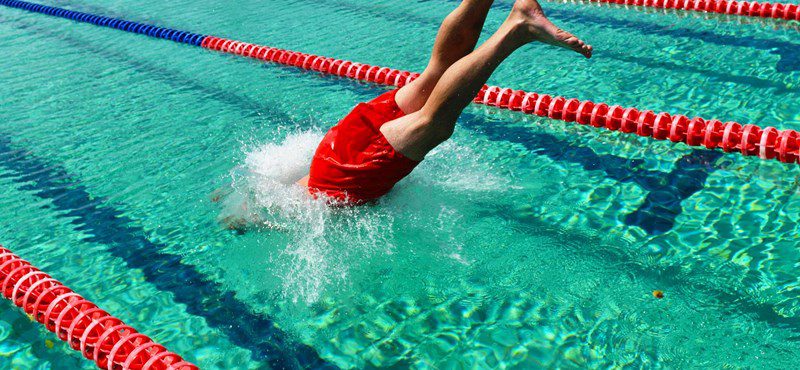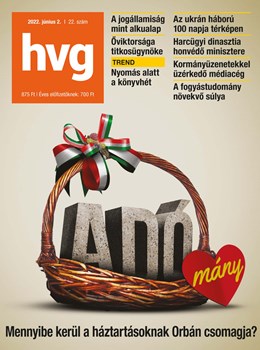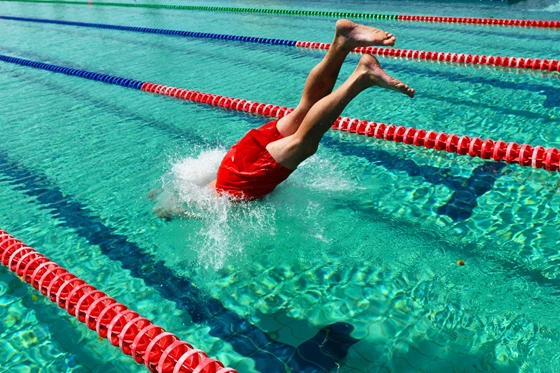[{“available”:true,”c_guid”:”b6b8be87-15f0-4443-8b12-2e1dbd08e0bb”,”c_author”:”Kovács Bálint”,”category”:”kultura”,”description”:”Ismét itt az egyik legjobb dolog a magyar filmben: a Friss Hús rövidfilmfesztivál. Nők közötti szerelmek, ahol nem a szexuális orientáció a lényeg, csodálatos, de nem eléggé ismert színészek, a test szokatlan részeiből áradó erotika: hét filmet ajánlunk a június 2-től 8-ig tartó fesztivál programjából.”,”shortLead”:”Ismét itt az egyik legjobb dolog a magyar filmben: a Friss Hús rövidfilmfesztivál. Nők közötti szerelmek, ahol nem…”,”id”:”20220602_friss_hus_2022_rovidfilm_fesztival_ajanlo_legjobb_filmek_hajszalrepedes_cannes”,”image”:”https://api.hvg.hu/Img/ffdb5e3a-e632-4abc-b367-3d9b3bb5573b/b6b8be87-15f0-4443-8b12-2e1dbd08e0bb.jpg”,”index”:0,”item”:”10374597-7070-4588-b192-baffe2fed43b”,”keywords”:null,”link”:”/kultura/20220602_friss_hus_2022_rovidfilm_fesztival_ajanlo_legjobb_filmek_hajszalrepedes_cannes”,”timestamp”:”2022. június. 02. 16:04″,”title”:”A kokaint túltoló színészeket és a fájdalmas intim gyantázást is érdemes megnézni”,”trackingCode”:”RELATED”,”c_isbrandchannel”:false,”c_isbrandcontent”:false,”c_isbrandstory”:false,”c_isbrandcontentorbrandstory”:false,”c_isbranded”:false,”c_ishvg360article”:false,”c_partnername”:null,”c_partnerlogo”:”00000000-0000-0000-0000-000000000000″,”c_partnertag”:null},{“available”:true,”c_guid”:”f51e4190-9fc8-4f88-85b1-fc2301db5a1e”,”c_author”:”MTI”,”category”:”gazdasag”,”description”:”Azt tanácsolják, legyünk figyelmesek, és nézzük meg, mit veszünk.”,”shortLead”:”Azt tanácsolják, legyünk figyelmesek, és nézzük meg, mit veszünk.”,”id”:”20220603_energiaital”,”image”:”https://api.hvg.hu/Img/ffdb5e3a-e632-4abc-b367-3d9b3bb5573b/f51e4190-9fc8-4f88-85b1-fc2301db5a1e.jpg”,”index”:0,”item”:”de0babe6-0824-48bc-8957-e0a926612c76″,”keywords”:null,”link”:”/gazdasag/20220603_energiaital”,”timestamp”:”2022. június. 03. 08:17″,”title”:”Magyar Energiaital Szövetség: A cukormentes energiaital megtéveszti a fogyasztókat”,”trackingCode”:”RELATED”,”c_isbrandchannel”:false,”c_isbrandcontent”:false,”c_isbrandstory”:false,”c_isbrandcontentorbrandstory”:false,”c_isbranded”:false,”c_ishvg360article”:false,”c_partnername”:null,”c_partnerlogo”:”00000000-0000-0000-0000-000000000000″,”c_partnertag”:null},{“available”:true,”c_guid”:”04430d23-2683-4518-bb0e-95e9f38d0416″,”c_author”:”MTI”,”category”:”sport”,”description”:”Ukrajna lesz majd Wales ellenfele a labdarúgó világbajnoki pótselejtező döntőjében, miután előbbi 3-1-re nyert Skócia vendégeként szerdán.”,”shortLead”:”Ukrajna lesz majd Wales ellenfele a labdarúgó világbajnoki pótselejtező döntőjében, miután előbbi 3-1-re nyert Skócia…”,”id”:”20220601_Ukrajna_verte_a_skotokat_a_vbselejtezon”,”image”:”https://api.hvg.hu/Img/ffdb5e3a-e632-4abc-b367-3d9b3bb5573b/04430d23-2683-4518-bb0e-95e9f38d0416.jpg”,”index”:0,”item”:”77168309-07f5-4974-b2f0-6d152efc0410″,”keywords”:null,”link”:”/sport/20220601_Ukrajna_verte_a_skotokat_a_vbselejtezon”,”timestamp”:”2022. június. 01. 23:10″,”title”:”Ukrajna verte a skótokat a vb-selejtezőn”,”trackingCode”:”RELATED”,”c_isbrandchannel”:false,”c_isbrandcontent”:false,”c_isbrandstory”:false,”c_isbrandcontentorbrandstory”:false,”c_isbranded”:false,”c_ishvg360article”:false,”c_partnername”:null,”c_partnerlogo”:”00000000-0000-0000-0000-000000000000″,”c_partnertag”:null},{“available”:true,”c_guid”:”da9444e7-9ea9-48d4-9a8d-ad123c53d800″,”c_author”:”hvg.hu”,”category”:”vilag”,”description”:”Zelenszkij szerint a teljes orosz hadsereggel harcolnak a keleti fronton, Lavrov provokációt lát abban, hogy Ukrajna a nyugati országoktól kér fegyvereket. “,”shortLead”:”Zelenszkij szerint a teljes orosz hadsereggel harcolnak a keleti fronton, Lavrov provokációt lát abban, hogy Ukrajna…”,”id”:”20220602_orosz_ukran_haboru_osszefoglalo”,”image”:”https://api.hvg.hu/Img/ffdb5e3a-e632-4abc-b367-3d9b3bb5573b/da9444e7-9ea9-48d4-9a8d-ad123c53d800.jpg”,”index”:0,”item”:”30c57108-7eb6-4256-b3da-f159d746fc3b”,”keywords”:null,”link”:”/vilag/20220602_orosz_ukran_haboru_osszefoglalo”,”timestamp”:”2022. június. 02. 21:10″,”title”:”Orosz dicséret Magyarországnak, Kirill pátriárka megúszta a szankciókat, Ukrajna húsz százalékát foglalták el oroszok – összefoglaló a háború 101. napjáról”,”trackingCode”:”RELATED”,”c_isbrandchannel”:false,”c_isbrandcontent”:false,”c_isbrandstory”:false,”c_isbrandcontentorbrandstory”:false,”c_isbranded”:false,”c_ishvg360article”:false,”c_partnername”:null,”c_partnerlogo”:”00000000-0000-0000-0000-000000000000″,”c_partnertag”:null},{“available”:true,”c_guid”:”30fa0288-97ff-43fe-b1b2-bb1781b24c4b”,”c_author”:”hvg.hu”,”category”:”itthon”,”description”:”A mostani 1,5 millióról Kövér házelnöki fizetésével egy szintre, havi bruttó 3,5 millióra emelné Orbán Viktor miniszterelnöki tiszteletdíját egy frissen benyújtott salátatörvény. Persze Orbán emellett megkapja a képviselői alapfizetést is, ami további bruttó 1,3 millió havi fix.”,”shortLead”:”A mostani 1,5 millióról Kövér házelnöki fizetésével egy szintre, havi bruttó 3,5 millióra emelné Orbán Viktor…”,”id”:”20220603_Tobb_mint_duplajara_emelnek_Orban_kormanyfoi_fizeteset”,”image”:”https://api.hvg.hu/Img/ffdb5e3a-e632-4abc-b367-3d9b3bb5573b/30fa0288-97ff-43fe-b1b2-bb1781b24c4b.jpg”,”index”:0,”item”:”79236ceb-f354-4944-b609-70158fe5fb4b”,”keywords”:null,”link”:”/itthon/20220603_Tobb_mint_duplajara_emelnek_Orban_kormanyfoi_fizeteset”,”timestamp”:”2022. június. 03. 15:28″,”title”:”Orbán Viktor fizetését több mint duplájára emelnék “,”trackingCode”:”RELATED”,”c_isbrandchannel”:false,”c_isbrandcontent”:false,”c_isbrandstory”:false,”c_isbrandcontentorbrandstory”:false,”c_isbranded”:false,”c_ishvg360article”:false,”c_partnername”:null,”c_partnerlogo”:”00000000-0000-0000-0000-000000000000″,”c_partnertag”:null},{“available”:true,”c_guid”:”900d9f60-1b4c-472d-b588-79c0a61ff7d0″,”c_author”:”Németh András”,”category”:”360″,”description”:”Félő, hogy nem az Ukrajna elleni orosz invázió első szakasza volt a második világháború óta legsúlyosabb európai konfliktus legvéresebb időszaka. A példátlan nyugati szankciókkal sújtott Moszkva mindent egy lapra tesz fel, s a sok százmilliárd dolláros kárt szenvedett Kijev sem hátrál.”,”shortLead”:”Félő, hogy nem az Ukrajna elleni orosz invázió első szakasza volt a második világháború óta legsúlyosabb európai…”,”id”:”202222__az_orosz_agresszio_100_napja__kolcsonos_kifarasztas__megmerevedett_allaspontok__ver_veritek_es_konnyek”,”image”:”https://api.hvg.hu/Img/ffdb5e3a-e632-4abc-b367-3d9b3bb5573b/900d9f60-1b4c-472d-b588-79c0a61ff7d0.jpg”,”index”:0,”item”:”ea5aa0f5-deab-4ddf-9e03-a2b91438627f”,”keywords”:null,”link”:”/360/202222__az_orosz_agresszio_100_napja__kolcsonos_kifarasztas__megmerevedett_allaspontok__ver_veritek_es_konnyek”,”timestamp”:”2022. június. 02. 15:30″,”title”:”100-dik napjába lép az Ukrajna elleni orosz agresszió, és nem látszik a vége”,”trackingCode”:”RELATED”,”c_isbrandchannel”:false,”c_isbrandcontent”:false,”c_isbrandstory”:false,”c_isbrandcontentorbrandstory”:false,”c_isbranded”:false,”c_ishvg360article”:true,”c_partnername”:null,”c_partnerlogo”:”00000000-0000-0000-0000-000000000000″,”c_partnertag”:null},{“available”:true,”c_guid”:”1c260234-a0b8-48be-b248-7241268c9c01″,”c_author”:”MTI/hvg.hu”,”category”:”kultura”,”description”:”Százhetvenhat pavilonban összesen száznyolcvankét kiadó köteteivel, könyvbemutatókkal, zenés és családi programokkal tartják meg a Vörösmarty téren és a Duna-korzón június 9. és 12. között a 93. Ünnepi Könyvhetet, amelyhez országszerte számos település csatlakozik eseményekkel.”,”shortLead”:”Százhetvenhat pavilonban összesen száznyolcvankét kiadó köteteivel, könyvbemutatókkal, zenés és családi programokkal…”,”id”:”20220603_Unnepi_Konyvhet_konyvek_kiadok”,”image”:”https://api.hvg.hu/Img/ffdb5e3a-e632-4abc-b367-3d9b3bb5573b/1c260234-a0b8-48be-b248-7241268c9c01.jpg”,”index”:0,”item”:”dcf64330-2d59-41a6-a872-2446f15d3b35″,”keywords”:null,”link”:”/kultura/20220603_Unnepi_Konyvhet_konyvek_kiadok”,”timestamp”:”2022. június. 03. 12:38″,”title”:”182 kiadó köteteivel találkozhatnak az érdeklődők az Ünnepi Könyvhéten”,”trackingCode”:”RELATED”,”c_isbrandchannel”:false,”c_isbrandcontent”:false,”c_isbrandstory”:false,”c_isbrandcontentorbrandstory”:false,”c_isbranded”:false,”c_ishvg360article”:false,”c_partnername”:null,”c_partnerlogo”:”00000000-0000-0000-0000-000000000000″,”c_partnertag”:null},{“available”:true,”c_guid”:”c8ab0f5a-4a67-43db-9de4-269291ddc9b0″,”c_author”:”MTI”,”category”:”itthon”,”description”:”Az egészségügyi intézmények finanszírozásának változásáról beszélt Takács Péter államtitkár, aki arról is szót ejtett, hogy a kórházi nővérek esetében az alapfizetés alacsony, de a túlmunka viszonylag jól meg van fizetve. “,”shortLead”:”Az egészségügyi intézmények finanszírozásának változásáról beszélt Takács Péter államtitkár, aki arról is szót ejtett…”,”id”:”20220603_Pinter_egeszsegugyert_felelos_allamtitkara_azt_igeri_egyeztet_a_valtozasokrol_a_szakmaval_mielott_a_kormany_ele_viszi_a_javaslatokat”,”image”:”https://api.hvg.hu/Img/ffdb5e3a-e632-4abc-b367-3d9b3bb5573b/c8ab0f5a-4a67-43db-9de4-269291ddc9b0.jpg”,”index”:0,”item”:”f29654ba-736e-4ee8-8c74-9187024a708f”,”keywords”:null,”link”:”/itthon/20220603_Pinter_egeszsegugyert_felelos_allamtitkara_azt_igeri_egyeztet_a_valtozasokrol_a_szakmaval_mielott_a_kormany_ele_viszi_a_javaslatokat”,”timestamp”:”2022. június. 03. 13:58″,”title”:”Pintér eü-államtitkára: Sok műtét olyan betegek miatt maradt el, akik nem vállalták a beavatkozást”,”trackingCode”:”RELATED”,”c_isbrandchannel”:false,”c_isbrandcontent”:false,”c_isbrandstory”:false,”c_isbrandcontentorbrandstory”:false,”c_isbranded”:false,”c_ishvg360article”:false,”c_partnername”:null,”c_partnerlogo”:”00000000-0000-0000-0000-000000000000″,”c_partnertag”:null}]


Order HVG weekly on paper or digital and read us anywhere, anytime!
That’s why we ask you, our readers, to support us! We promise to continue to give you the best we can!
Recommended from the first page













































